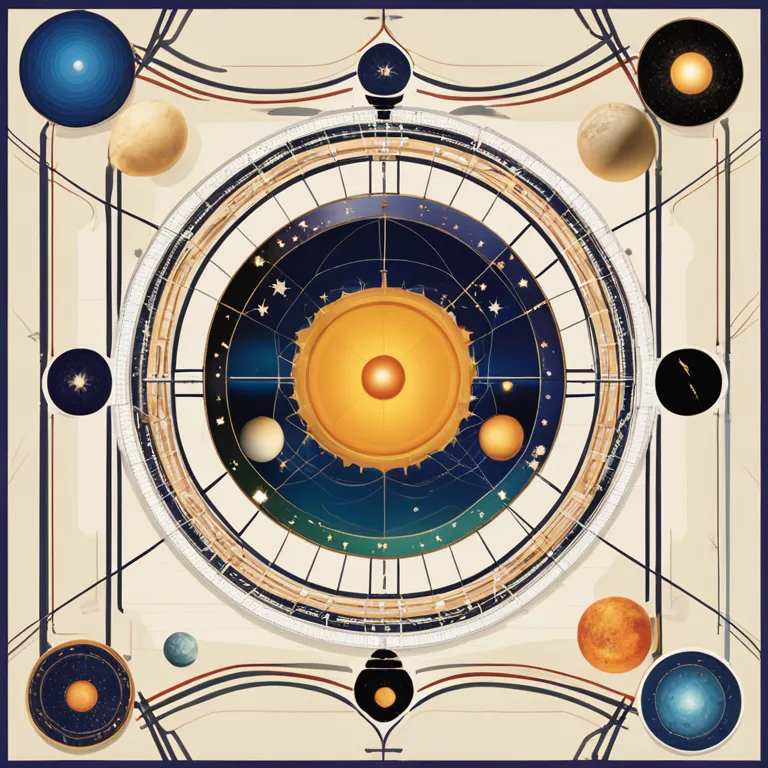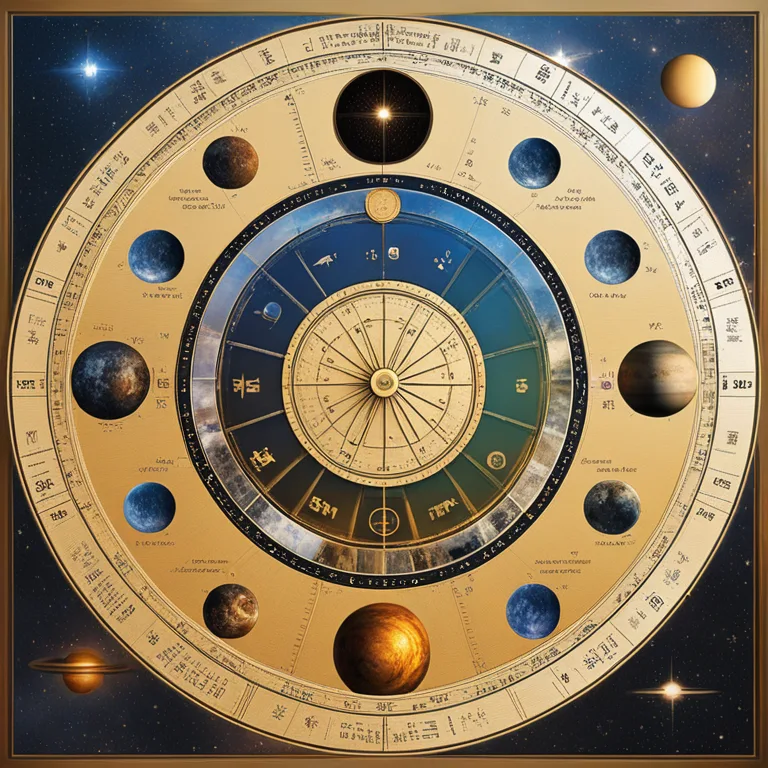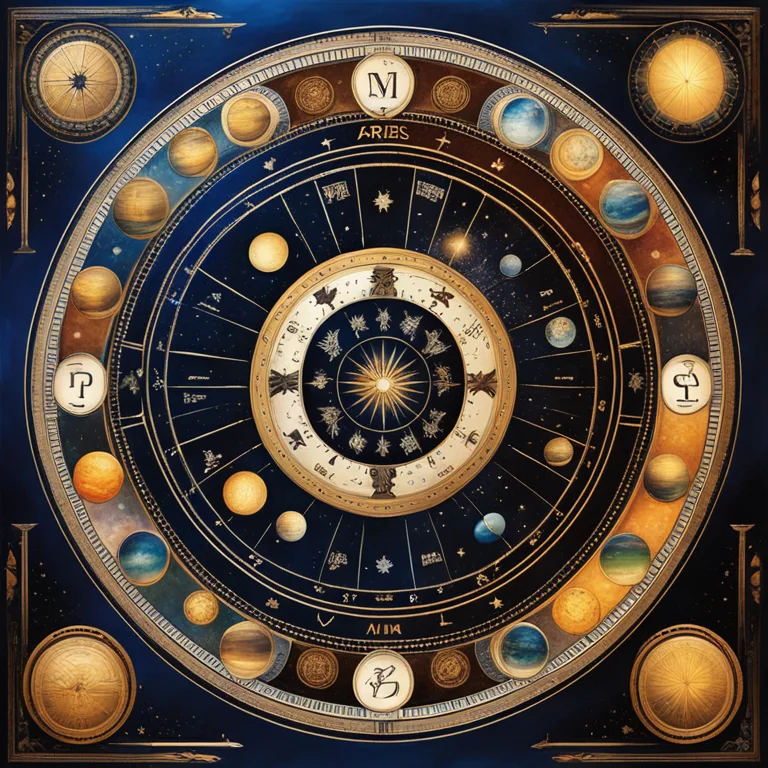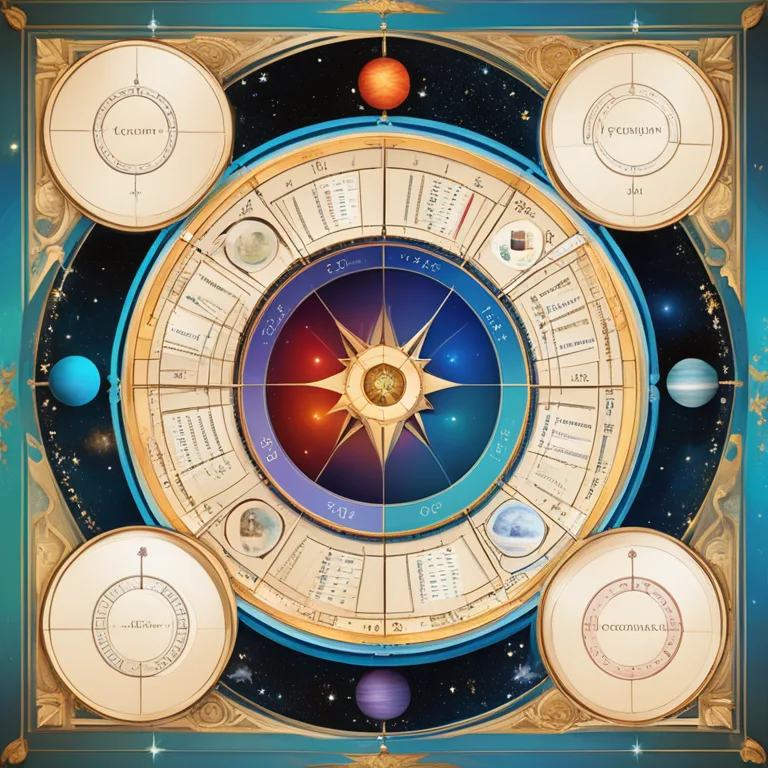
The Essential Guide to Reading Birth Charts
Dive into the basics of birth chart analysis and discover the cosmic blueprint of personality with our straightforward guide.
article by Priya Deshmukh
Introduction to Birth Charts
Astrology provides a rich tapestry of knowledge that offers insights into countless aspects of human life, and at the core of this ancient practice lies the birth chart. A birth chart, also known as a natal chart, is a snapshot of the sky at the exact moment of an individual’s birth. It serves as a celestial compass, charting the positions of the planets and other significant cosmic entities across various zones of influence called houses, and measured in signs of the zodiac. To the novice, a birth chart can seem like a mystifying array of symbols, lines, and geometric angles, but with the right guidance, it reveals profound depths of understanding about one's character, potential, challenges, and opportunities.

The Zodiac Signs and Planets
To interpret a birth chart, one must begin with the fundamentals: the zodiac signs and planets. The zodiac is a wheel divided into 12 segments, each representing a unique sign, from Aries to Pisces. These signs function as a backdrop to where planets are positioned and lend their own energy and character to the planetary influences. The planets, from the luminaries—the Sun and Moon—to the distant Pluto, represent various facets of our being. For example, the Sun signifies one's core identity and will, while the Moon reflects emotional inner life. Mercury's placement speaks to communication style, Venus to affection and value, and Mars to drive and aggression. Each of these celestial bodies imprints distinct traits upon individuals based on their positions at birth.

The Houses and Their Meanings
Next, we navigate the birth chart's houses. The chart is divided into 12 houses, each correlating with life areas like identity, resources, siblings, home, romance, health, partnerships, transformations, philosophy, career, community, and the subconscious. The placement of planets within these houses indicates where in life those planetary energies will tend to manifest. A crowded fourth house might suggest a strong emphasis on family and home life, whereas multiple planets in the tenth could indicate a person with a powerful drive for career achievement. Understanding this dimensional layer of astrological interpretation sheds light on where life's dramas and achievements are likely to occur.

Significance of Aspects
The interplay between planets, known as aspects, is a nervous system of the birth chart. The major aspects include conjunctions (planets in the same place), sextiles (60 degrees apart), squares (90 degrees apart), trines (120 degrees apart), and oppositions (180 degrees apart). These angles describe the relationships between the energies of interacting planets. Conjunctions might intensify energies, while squares could represent challenges or conflict. Trines often suggest harmony and natural talent, whereas oppositions could indicate a need for balance or tension between opposing forces. Each planetary pairing tells a story of potential harmony or discord, and the skilled reader learns to blend each aspect's narrative into the overall picture of the chart.

The Role of the Ascendant
An indispensable key to the birth chart is the Ascendant, or rising sign — the zodiac sign that was ascending on the eastern horizon at the moment of birth. This sign marks the cusp of the first house and sets the stage for the individual's approach to life, appearance, and mannerisms. The Ascendant's sign imbues the chart with a tone, accentuating specific qualities of the individual. It often shapes the first impressions one makes on others. The Ascendant, along with the Sun and Moon signs, forms the essential trio that underpins the basic structure of personality in astrological analysis.
Interpreting the Lunar Nodes
Lastly, the lunar nodes are critical yet sometimes overlooked components of a birth chart. The North Node represents one's destiny or life purpose, pointing toward growth edges and soul lessons to be learned. The South Node, on the other hand, indicates past life talents as well as tendencies that may no longer serve the individual's growth. Understanding the nodal axis offers insight into deeply spiritual life journeys and the narrative arc of a person's evolutionary growth.
In summary, reading a birth chart involves synthesizing an intricate web of celestial placements, houses, and aspects. It's an integrative process, combining knowledge and intuition to shed light on an individual's life story as written in the stars. With practice and patience, the art of birth chart interpretation can provide a wellspring of reflection and self-awareness to those who seek its wisdom.
Published: 12/22/2023
Modified: 12/22/2023
More predictions
Come back here soon to learn more about yourself and your future


Understanding 12 Astrological Houses
Delve into the meanings and influences of the twelve astrological houses that shape personal horoscopes.


Astrological Houses: A Comprehensive Guide
Discover the fundamental roles of astrological houses and how they influence your personal horoscope and astrology readings.


The Role of Astrological Houses
Discover the fundamental concepts of astrological houses and how they influence personal astrological charts.